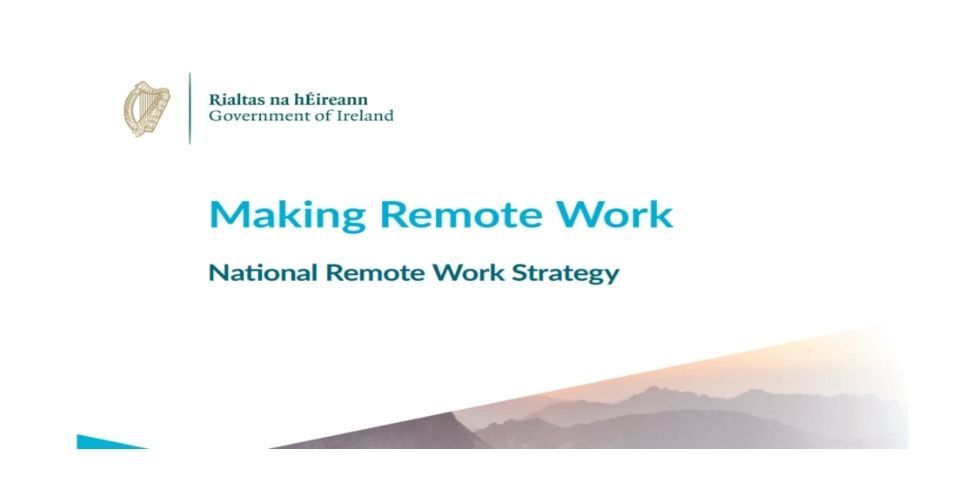In brief: When large global companies like Microsoft announce that its’ entire Irish workforce can continue to work from home indefinitely, it is clear that remote working is here to stay in some form. In recognition of this, on 15th January 2021 the Government published the National Remote Work Strategy (the “Strategy”) which aims to ensure that working remotely will be a permanent feature within the Irish workplace. Shane Costelloe explains the three pillars of the strategy
The COVID-19 pandemic has changed the way we work, specifically the widespread adoption of remote working. Almost overnight, employers and employees were forced to adapt to remote working arrangements, often in far from ideal conditions or without knowledge of the technology we now see as essential business tools. Despite the challenges faced, employees have embraced this new world and many wish to continue working remotely once the pandemic has ended. The decentralisation of Dublin, leading to a reduction in the cost of living and doing business in the capital, appears to be the primary driving force which will maintain the appetite of stakeholders for remote working after the pandemic has ended.
Research carried out by the Whitaker Institute in NUI Galway in October 2020 has revealed that 94% of participants surveyed would like to work remotely after the pandemic. The experience of employers, on the other hand, has been mixed. While a separate study revealed that more than half of Irish business leaders have seen an improvement in productivity while their employees have been working from home, we know that the temptation to bring staff back to the workplace will be severely put to the test when it is safe to do so.
In any event, when large global companies like Microsoft announce that its’ entire Irish workforce can continue to work from home indefinitely, it is clear that remote working is here to stay in some form. In recognition of this, on 15th January 2021 the Government published the National Remote Work Strategy (the “Strategy”) which aims to ensure that working remotely will be a permanent feature within the Irish workplace.
THE GOVERNMENT’S STRATEGY
The Strategy is built on three pillars, namely:-
1. Create a conducive environment;
2. Develop and leverage remote work infrastructure; and
3. Build a remote work policy and guidance framework.
1. CREATE A CONDUCIVE ENVIRONMENT
The Strategy recognises that creating an environment conducive to remote working is essential in order to facilitate an increased uptake. It acknowledges that employers and employees will need to be supported as they transition to remote working options and this pillar seeks to introduce measures which will make that transition easier.
The Strategy lists a number of immediate actions which aim to create an environment conducive to remote working. Such actions include the introduction of a legal framework around which a request to work remotely can be framed, a review of tax and financial incentives for employers and employees who work remotely and providing employers and employees with ongoing up-to-date guidance on remote work.
The Strategy also recognises that the introduction of widespread remote working has blurred the line between work hours and non-work hours for many employees. To combat this, the Workplace Relations Commission have been asked to draw up a Code of Practice on the right to disconnect, for approval by the Minister for Enterprise, Trade and Employment. It will be possible to refer to this Code in the context of employment law disputes and adjudications.
The Strategy also places importance on the adoption of legislation which shall provide a framework for remote working requests from employees, which should be welcomed by employers as it will remove the ambiguity and potential for unfair treatment from the process. The Strategy expects such legislation to be drafted by Q3 2021.
2. DEVELOP AND LEVERAGE REMOTE WORK INFRASTRUCTURE
The Strategy also recognises that in order to increase national remote work adoption, an adequate infrastructure must be in place.
The Strategy lists exploring how the National Broadband Plan can be accelerated across rural Ireland as an essential action point. Additionally, the development of remote working hubs throughout the country and particularly along the Atlantic Coast is listed as a key action point. These remote working hubs may provide a valuable solution for employers and employees seeking to adopt remote working arrangements. For employers, the hubs offer the chance to have employees working closer to home, but still within an office environment. For employees, hub working has the benefit of reducing their commute whilst also ensuring that they have access to office facilities.
3. BUILD A REMOTE WORK POLICY AND GUIDANCE FRAMEWORK
The Strategy acknowledges that remote working needs to be underpinned by an agile policy and guidance framework. In December 2019, the Department of Enterprise, Trade and Employment (the “Department”) published the Remote Work in Ireland Report. This report identified three areas to be addressed to ensure that Ireland could reap the benefits of remote working: data, collaboration and guidance.
The Department has already sought to address issues around guidance by launching a website page which will provide employers and employees with information and advice regarding remote working which will be updated as new guidelines are introduced.
The Remote Work in Ireland Report also identified a lack of data available on remote working. To combat this, the Strategy commits to carrying out a number of different strands of research. The results of these strands of research hope to provide policy makers with an improved picture of the impacts and potential for remote work in public policy which should aid long-term policy development. Additionally, the Strategy seeks to improve collaboration between governmental departments to ensure that the work being carried out across the Government is aligned.
The widespread adoption of remote working has proved challenging but, according to preliminary data, apparently beneficial for many employers and employees. The Strategy seeks to ensure that remote working becomes a permanent part of Irish life after the pandemic in a way that maximises economic, social and environmental benefits.
Notwithstanding initial positivity, the key questions arising for employers from the Strategy, which currently remain unanswered include:
The Code of Practice on the right of employees to disconnect and how will this impact an employer’s output;
As we have seen in a decision from the Workplace Relations Commission this week, if the hand of the employer will be forced where there is a request for remote working;
Whether workplace health and safety law will develop to meet the changing ‘workplace’ environment and how this will affect an employer’s duty to provide a safe place and system of work to its employees when that place is at the employee’s discretion; and
How the potentially complex frameworks to develop remote working will impact the remuneration and taxation of employees.
CONCLUSION
While ambitious and commendable in its aims, it must be remembered that the Strategy currently remains a blueprint on the topic of remote working in Ireland. The challenges to meet these aims must be addressed if Ireland is to truly embrace remote working. The National Broadband Plan will have an important role to play while the hurdles for employers in terms of hiring, developing a remote working culture and maintaining training and work standards should not be underestimated.
As we have seen with the rise of the ‘Gig Economy’ and the use of independent contractors, the evolution of the modern employee in Ireland, and the ability of the law to keep pace, often leaves employers with problems to overcome. It remains to be seen how the development of remote work in Ireland will impact employers, whether a multi-region balance away from Dublin can be achieved and what institutional and statutory changes will be needed to address this new reality.
January 29th, 2021|Publications







